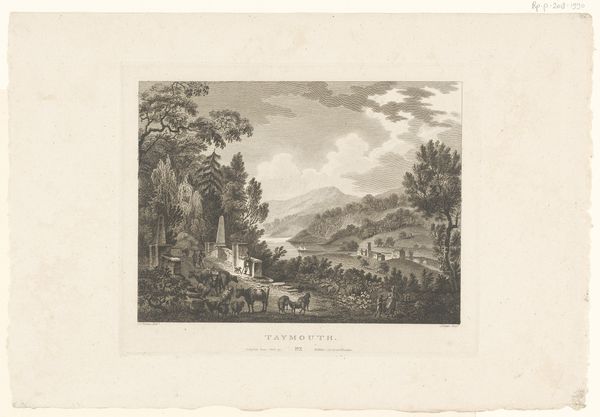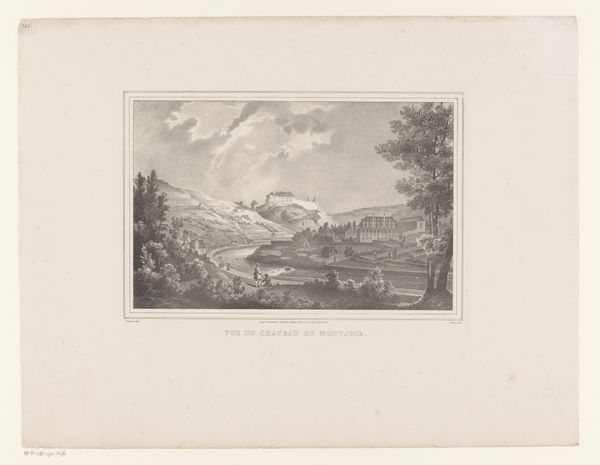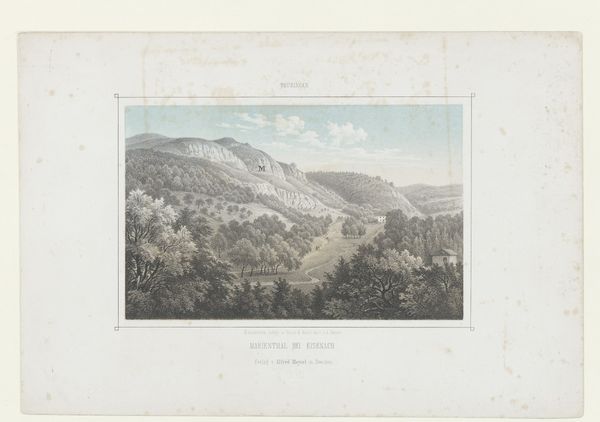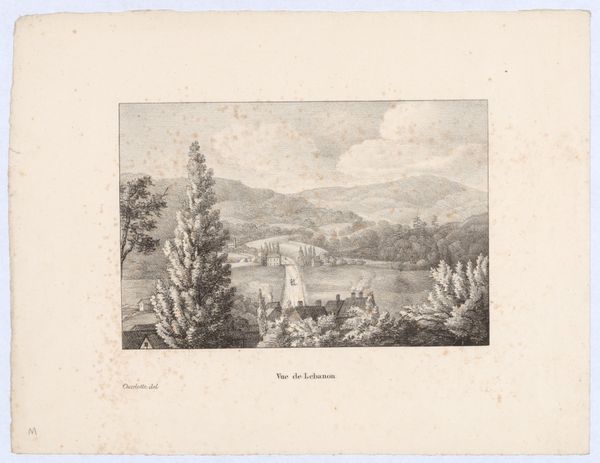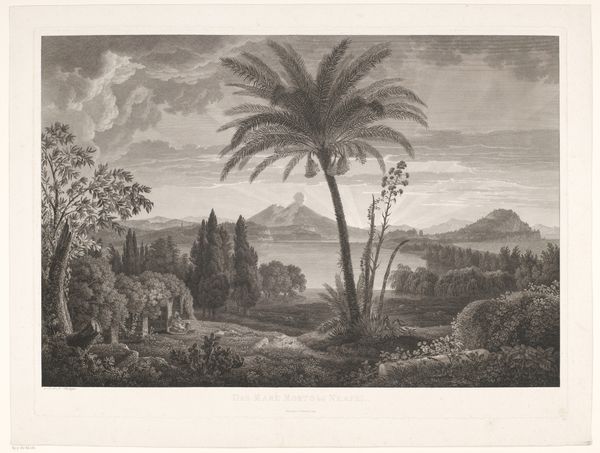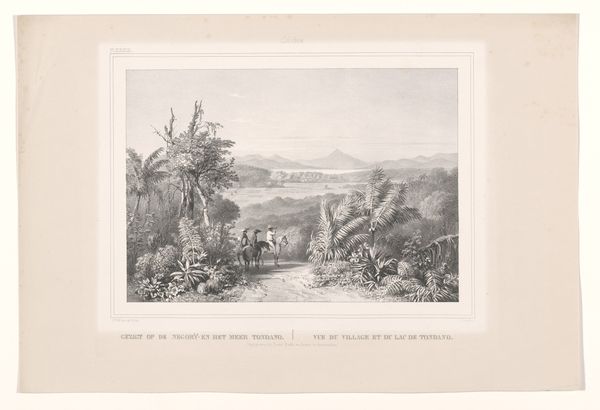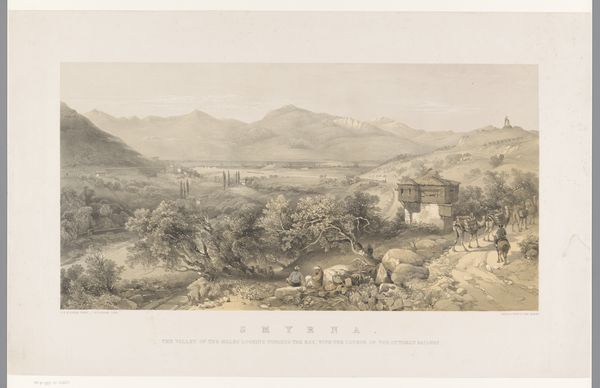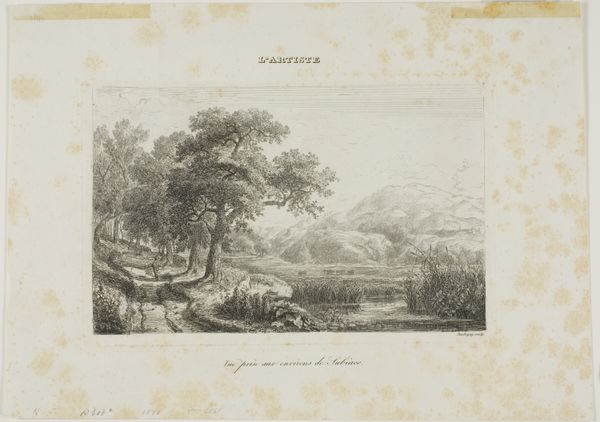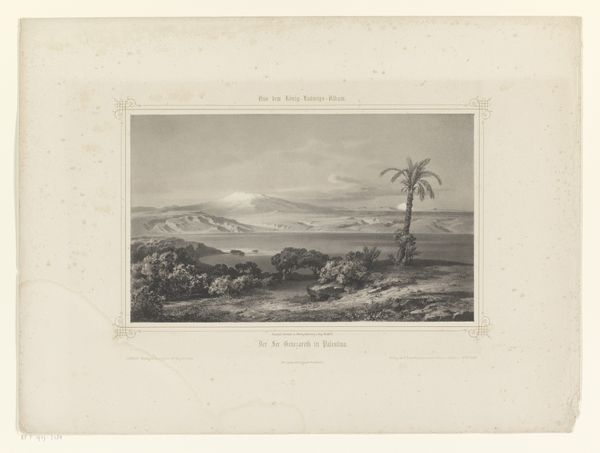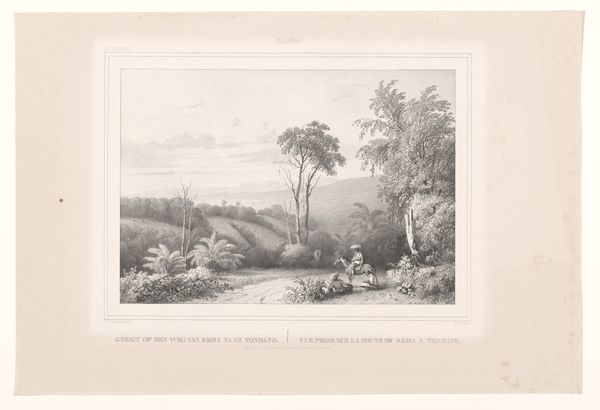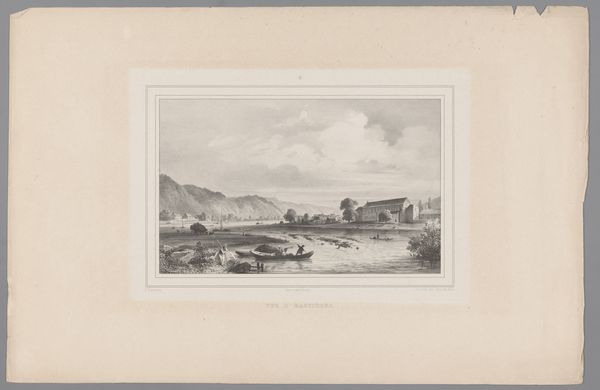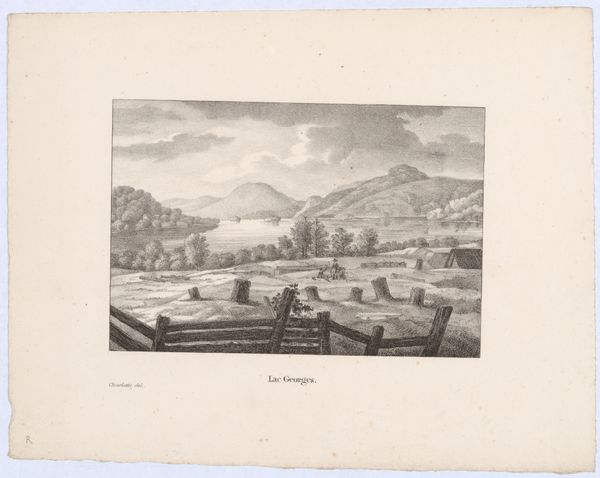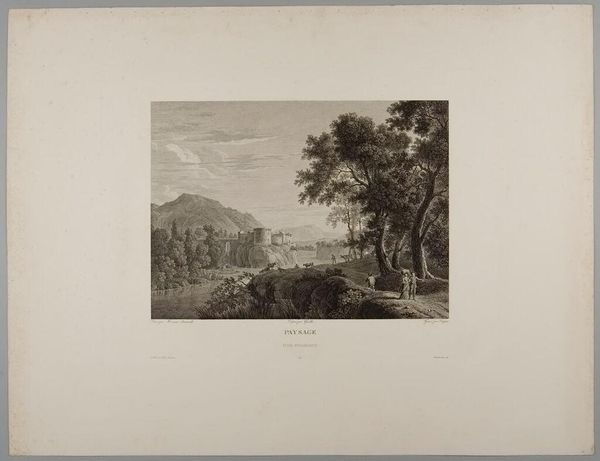
drawing, print, etching
#
drawing
# print
#
etching
#
landscape
#
romanticism
#
history-painting
Dimensions: height 489 mm, width 631 mm
Copyright: Rijks Museum: Open Domain
Curator: This etching by Louis Jules Frederic Villeneuve, dating from between 1821 and 1839, depicts "The Tomb of Napoleon I Bonaparte on St. Helena." Editor: It's strikingly somber. The landscape is vast and hilly, and the tomb itself looks rather isolated, almost as if Napoleon has been intentionally forgotten on this remote island. The tonality reinforces a profound sense of melancholy and quiet resignation. Curator: Indeed, that melancholic feeling reflects a broader European sensibility in the Romantic era following Napoleon's downfall. Consider the visual language of confinement – the tomb is surrounded by fencing, echoing his political imprisonment by the British. Villeneuve masterfully translates a narrative of imperial decline into an intimate landscape. Editor: I'm drawn to how the artist uses light. There’s a dramatic contrast between the illuminated foreground and the darker, shadowed hills in the background. Is this intended to symbolize Napoleon's fading legacy against the timeless backdrop of nature itself? The foreground reads almost as a stage, carefully set. Curator: Absolutely. Furthermore, St. Helena held a highly charged symbolic significance. Exiling Napoleon there was meant to neutralize him, and to curtail Bonapartism; that is, a very personal type of authority. Villeneuve's print serves, in some ways, to reiterate that story, and to question its political repercussions in Restoration Europe. Consider, too, the use of figures seemingly visiting the site: how does their presence reify or challenge this narrative of marginalization? Editor: Now that you mention the figures, their scale seems deliberately understated compared to the dominating natural landscape. Are they meant to be read as allegorical reminders of human insignificance against the grand scale of history? They are visually absorbed into the overall scene; more staffage than main characters. Curator: I would argue that their presence adds a layer of complicity; even culpability to a situation predicated on British geopolitical might. Consider, again, how period audiences would have perceived such potent signifiers: the distant tomb, the implied confinement, the memorial pilgrimage – all serving as a commentary on political expediency. Editor: So, beyond its initial appeal as a landscape or history painting, Villeneuve’s etching cleverly employs formal artistic devices to prompt reflection on themes of power, isolation, and lasting historical impact. I initially saw it as melancholic, now it seems quite astute. Curator: Precisely; Villeneuve creates an etching imbued with layers of sociopolitical and cultural discourse through a Romantic lens. It asks us to think more critically about the making and meaning of historical events and their visual echoes.
Comments
No comments
Be the first to comment and join the conversation on the ultimate creative platform.
